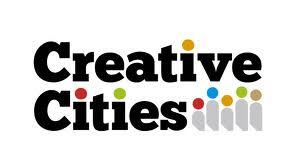The actions and objectives of the network contribute to the achievement of the Lisbon agenda as the network provides hands-on knowledge to attract more investors in Central European Cities and thus generates more employment opportunities.
Exploiting the hidden potential of the Creative Industry
In times of economic recession, creative industries are facing several challenges such as a low capital endowment, poor networking and low external visibility. Creative industries have hidden potentials to foster economic growth, but unfortunately these competences are often unrecognized. The sector forms the backbone for international marketing strategies, offers many possibilities to improve income situations and increases employment opportunities. Demonstrating the benefits this sector has to offer, providing appropriate hands-on experience and know-how and active lobbying is needed to get the sector back on track. This is what the Creative Cities network for Central European Cities strives to do. The network is comprised of five cities (Leipzig, Genoa, Gdansk, Ljubljana and Pecs), each with their own local plans, strategies and stakeholders.
Using transnational cluster tools to boost the Creative Industry
The overall purpose of the project is to establish a transnational network of creative industry clusters in large Central European Cities. The participating cities aim to increase the visibility of their creative industry potentials by testing transnational cluster marketing tools and creating qualified cluster contact points. For this, the network capitalises good practices and implements innovative joint approaches. More specifically the “Creative Cities”: project team has identified the following objectives:
- Improve framework conditions and to initialize creative industry clusters;
- Promote entrepreneurial skills and competitiveness of creative industries, creating positive climate attracting different investments and exchanging know-how;
- Improve their external visibility through transnational marketing and networking;
- Exploit potentials in the development of decayed urban areas through the allocation of creative industries in those city districts.
The most important milestone of the project will be a Joint Action Plan (JAP) involving a set of guidelines and recommendations for other cities to use in similar projects. The JAP gathers the results of the network’s Cluster Work Groups and elaborates on the outcomes of the SWOT analysis. The plan is structured around five activities: Networking, Education and Employment, Transfer of Knowledge, Marketing, Infrastructure and Financial Support. One of the questions the partners seek to answer is how to further develop transnational cooperation potentials, an issue that bothers the members of the Innovations Circle Network, too.
Besides producing joint guidelines to upgrade the potential of creative industries, the network also published official statements on the European Commission’s Green Paper "Unlocking the potential of cultural and creative industries".
Resources used
The project is financed through the Central Europe programme and contributes to the fourth priority: “Enhancing competitiveness and attractiveness of cities and regions”. The programme encourages cooperation among Central European countries to improve innovation, accessibility, environment and to progress the competitiveness and attractiveness of cities and regions.

